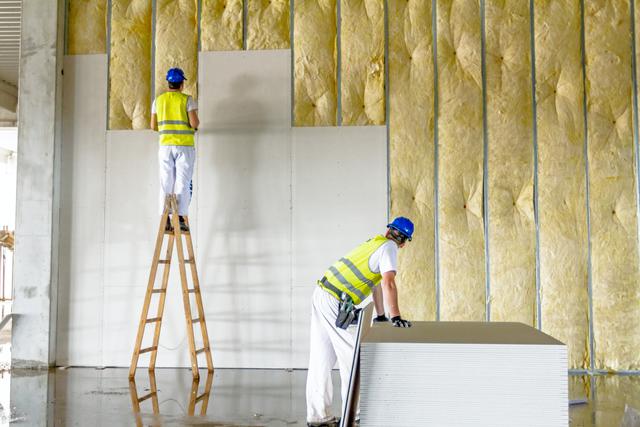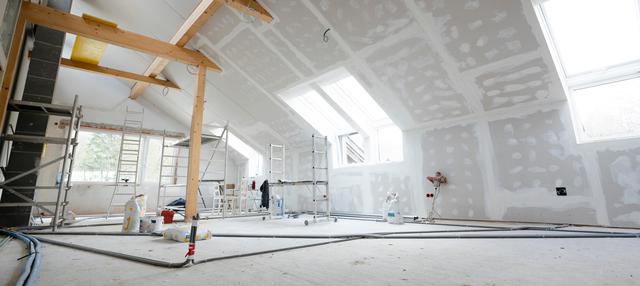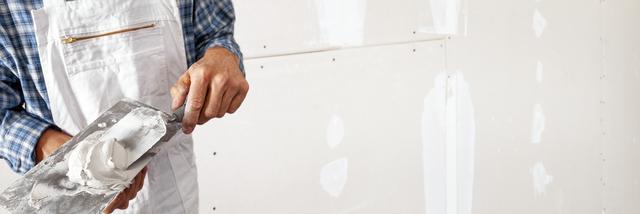Residential Use
Waterproof drywall is ideal in homes for bathrooms, kitchens, and laundry rooms where water exposure is common. Green or purple boards resist moisture and help prevent mold growth. It’s also a good choice as a backing for tiles in shower areas, providing extra protection against water damage. Additionally, using it in basements or humid spaces helps create a healthier environment by reducing the risk of mold and mildew.
Commercial Projects
Commercial buildings often need more durable solutions due to high traffic and potential water exposure. Waterproof drywall is commonly used in hospitals, schools, and restaurants. In these settings, moisture-resistant panels enhance durability, and high-impact areas may require panels that meet ASTM standards.
In kitchens and restrooms, waterproof drywall helps preserve structural integrity and ensures compliance with health regulations. Choosing the right type can reduce maintenance costs and extend the lifespan of the walls in commercial applications.
Maintenance and Care
Proper maintenance of waterproof drywall is essential for its longevity and effectiveness. Regular cleaning and timely repairs can help prevent damage and extend its lifespan.
Cleaning Guidelines
Regularly inspect the drywall for signs of moisture or damage, such as discoloration or damp spots. For routine cleaning, use a soft cloth or sponge with mild detergent. Avoid harsh chemicals that can damage the material.
Cleaning Tips:
- Dry Cloth: Use a microfiber cloth for dusting without adding moisture.
- Wet/Dry Vacuum: Ideal for larger areas to avoid water damage from excess moisture.
After cleaning, rinse off any detergent residue and thoroughly dry the surface to prevent dirt buildup.
Damage Prevention and Repair
Preventing damage is key. Regularly check for leaks in pipes or roofs, which can lead to moisture issues. In humid areas, use a latex-based waterproofing primer on seams and edges for added protection.
Repair Steps:
- Identify Damage: Look for cracks or deterioration.
- Seal Cracks: Use an appropriate sealer for visible cracks.
- Patch Holes: Apply drywall tape over the holes, followed by the joint compound. Once dry, sand the area for a smooth finish.
Addressing damage promptly will help prolong the life of your waterproof drywall.









comments